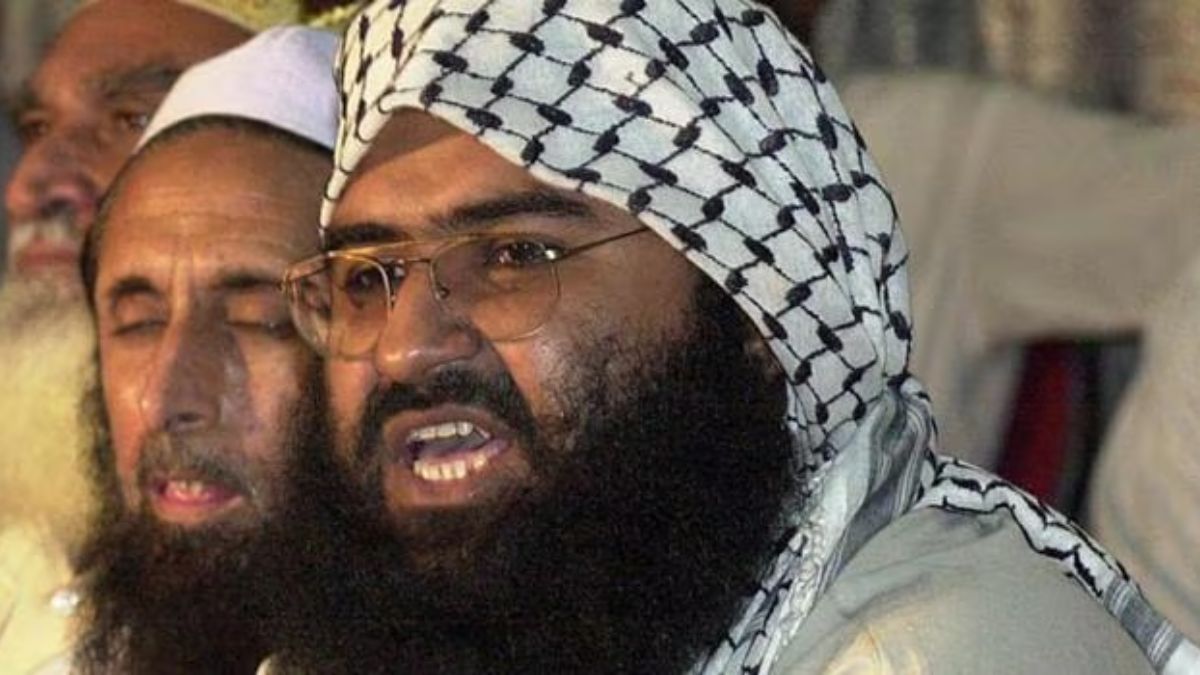The recent decision of terror outfit Jaish-e-Mohammed (JeM) to establish Jamaat-ul-Muminat, a separate female brigade, is indeed a matter of grave concern. In Operation Sindoor, India’s retaliation following the Pahalgam terrorist attack, India struck nine terror camps inside Pakistan, including JeM’s headquarters in Bahawalpur.
Reportedly, the Indian strikes led to the near-total destruction of JeM’s Bahawalpur complex and the death of 10 family members of Masood Azhar. Enraged and seething, Masood Azhar has launched massive fundraising and recruitment campaigns. These efforts highlight JeM’s attempts to recover from its losses, rebuild its terror infrastructure and logistics, and revitalise the morale of its cadres and leadership. Raising a separate female brigade is part of this overall restructuring and rebuilding, but also an innovation, marking a decisive shift in its tactics.
Masood Azhar’s sister, Sadiya Azhar—whose husband, Yusuf Azhar, died in the Indian strikes at Bahawalpur—will lead this brigade. It is recruiting the wives of JeM commanders and vulnerable women studying at JeM centres in Bahawalpur, Karachi, Kotli, Muzaffarabad, Haripur, and Mansehra. JeM has also launched an online course titled Tufat-ul-Muminat to train women for jihad. Female members of Masood Azhar’s family, including his sisters Sadiya and Samaira, and the widows of slain commanders, including Pulwama mastermind Umar Farooq’s widow, Afeera Farooq, will deliver the 40-minute-long online lectures on jihad.
The main objective is to indoctrinate and radicalise women for religious purposes and jihad-related tasks. It also includes sending women on suicide-bombing missions. Each participant will be charged PKR 500 for the course, which will also help in raising funds for the female brigade. At JeM’s recent public event in Rawalakot (PoK), its leaders encouraged Dukhtaran-i-Islam, an Islamist organisation, to recruit members for the new unit. The main reason for starting online recruitment is the restrictive environment of Pakistani society, where women’s open and free movement is difficult due to religious prohibitions.
In his speech days after the formation of Jamaat-ul-Muminat, Masood Azhar urged women to join his “global jihad” against India, promising paradise in return. Justifying the formation of a female brigade, he claimed, “The enemies of Jaish have put Hindu women into the army and set up female journalists against us,” declaring that he is “mobilising his women to compete and fight against them.”
Impact Shorts
More ShortsAccording to intelligence sources, the idea of a separate female brigade is the brainchild of Masood Azhar and his brother Talha Saif. However, such assessments do not account for JeM’s previous attempts to include women in jihad. Notably, the Pulwama mastermind, Umar Farooq, recruited a Kashmiri girl from the Pulwama district, Insha Jaan, and her friend as OGWs who rendered critical support in the planning and execution of the Pulwama fidayeen attack. Umar Farooq radicalised Insha and her friend. Insha even became his girlfriend. Umar Farooq narrated examples from the Palestinian jihadist movement and the “black widows,” the female suicide bombers of the Chechen jihadist movement, who killed themselves to avenge the deaths of their male relatives. He had almost planned to send them as suicide bombers; however, it did not materialise, and Adil Dar was recruited instead.
Even before that, whenever JeM terrorists arrived in Kashmir and stayed with Kashmiri families, they used the household’s females for minor errands. They treated them respectfully, unlike the Hizbul Mujahideen terrorists, who reportedly lacked toilet manners, spoke in rough language, and displayed high-handedness. Further, the JeM terrorists’ steadfast commitment to religion also attracted local girls.
In the 2000s, JeM cadres engaged in intimate relationships with local girls. The security forces (SFs) often used these girls to trap and kill JeM commanders. In one such case, a JeM chief commander was madly in love with a local girl. The SFs recruited him and placed him in a safe house, where he stayed with his Kashmiri girlfriend and his handler, a local police inspector. Based on his information, the SFs neutralised the entire leadership of JeM in the Kashmir Valley.
During his stay in the safe house, the JeM commander developed a cordial relationship with his handler. The JeM commander’s girlfriend started tying Rakhi to the police inspector, treating him as her brother. Finally, the Indian SFs managed to get the JeM commander and his girlfriend safely to Pakistan. In Pakistan, he continued to help Indian agencies for several years, providing critical inputs about JeM cadres in the Valley.
After the abrogation of Article 370, Indian agencies launched a massive crackdown on the separatist ecosystem, including the OGWs, financiers, local coordinators, and hawala dealers. Having lost the old OGWs, JeM started recruiting girls and young teenage boys as OGWs. JeM used these girls for transferring weapons, money, SIM cards, and other necessary items.
JeM started using girls because they easily managed to evade security checks and scrutiny by India’s widespread intelligence network. In the future, JeM is likely to use girls for suicide-bombing missions. Further, with their online courses, JeM can find high-quality female jihadists in the Indian hinterland as well.
Given the massive radicalisation and polarisation in India’s social landscape, it is likely that JeM’s jihadist trap will lure Muslim girls. For Indian agencies, it will be challenging to identify such female jihadists who can be used for a wide range of purposes—from suicide bombings and arranging logistics for terrorists to honey-trapping members of the Indian security forces and intelligence.
Lastly, it needs to be mentioned that JeM is known for religious conservatism and steadfast commitment to Islamic tenets. However, JeM’s decision to start a separate female brigade shows that it is flexible in making tactical changes and adjustments when it comes to the larger objective of jihad.
(The author is a Cornell University graduate in public affairs, bachelors from St Stephen’s College, Delhi and has done his PhD on Jaish-e-Mohammad. He is a policy analyst specialising in counterterrorism, Indian foreign policy and Afghanistan-Pakistan geopolitics. Views expressed in the above piece are personal and solely those of the author. They do not necessarily reflect Firstpost’s views.)
)